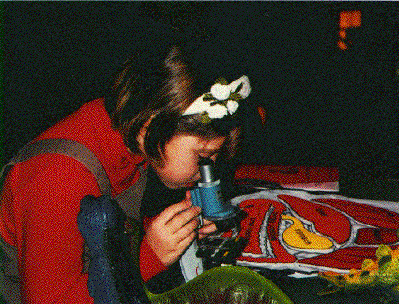
Knowledge Transfer through Education
The STC educational programs reach the K-12 students who are tomorrow's scientists, engineers and mathematicians, all the way to the graduate students who bring the latest research methods and technology trends to industry. Other programs reach teachers and faculty, who will in turn transfer knowledge to many students. Because the future success of the U.S. economy depends on the number of students who choose to pursue technical careers, stimulating their interest in science is a necessity. Recent programs include:- At the Center for Astrophysical Research in Antarctica, the Space Explorers program lets Chicago- area secondary school students interact via ham radio with researchers at the center's South Pole station.
- The Center for Light Microscope Imaging and Biotechnology has worked with the Carnegie Science Center on a multimedia exhibit entitled "Journey into the Cell." The exhibit is a planetarium show that takes observers through the workings of a single live human cell.
- Scientists at the Center for Ultrafast Optical Science have worked on a video displayed at the Exploratorium Museum in San Francisco that shows a light pulse in flight as it interacts with lenses and mirrors.
 |
| Children's projects for the SEARCH (Science Education And Research for CHildren) Science Fair are coordinated by undergraduates working with schools and youth groups - Center for Magnetic Resonance Technology for Basic Biological Research |
The final step in this education process is the transfer of graduate students from centers to industry. In several cases, new ideas and technologies are transferred with the students who have helped to develop them. From the Center for Quantized Electronic Structures, the Lytel company acquired a new laser technology and the student who developed it with center support. Students formerly with the Center for Computer Graphics and Scientific Visualization have led development efforts at cutting-edge graphics companies such as Wavefront, Pixar, Lucasfilm, and Silicon Graphics. For example, the project group that created the latest Silicon Graphics graphics library, Inventor, was led by two center graduates.
Knowledge Transfer Activities
Sites & Affiliations | Leadership | Research & Applications | Major Accomplishments | FAQ | Search | Knowledge & Technology Transfer | Calendar of Events | Education & Outreach | Media Resources | Technical Reports & Publications | Parallel Computing Research Quarterly Newsletter | News Archives | Contact Information
| Hipersoft | CRPC |
© 2003 Rice University
|